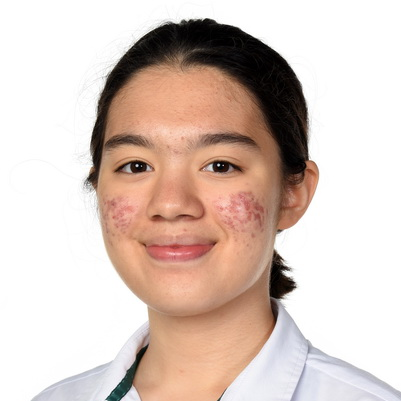| BIOLOGY | |
| Thinking of achieving herd immunity? by Anya Sithambaram '23 |  |
| As the Malaysian government races to distribute Covid - 19 vaccines in the hopes to achieve herd immunity, many issues which have been overlooked may make it harder than foreseen...
|
Anya Sithambaram '23 |
 |
I'm a person who is passionate about music, science, maths, computing, the environment... |
|
Now that COVID-19 vaccines have been authorised for use in many countries, the race to achieve “herd-immunity” is becoming the focus of governments and healthcare sectors all around the world. Vaccine roll-out plans and shipment statistics flood the headlines of newspapers, while scientists and doctors are assuring the public of the efficacy and safety of each vaccine. And Malaysia is no exception. Since the start of phase one vaccinations in February, a total of 571,472 frontline workers in Malaysia have received at least one dose of the vaccine (as of April 10). The 66.7 million doses secured by the Malaysian government from five different companies is enough to fully vaccinate 109.65% of all Malaysians and non-Malaysians residing in the country, and the government aims to achieve herd-immunity by inoculating 80% of the population by February 2022. However, there are concerns as to whether this goal can be met, taking into account logistical issues and vaccine hesitancy, as well as the low registration numbers among people aged 60 and above for phase two vaccinations that are scheduled begin this month. Despite this, if all goes to plan and 80% of the population is vaccinated by February next year, would that be an all-clear for Malaysia? A closer look at the clear and comprehensive “National COVID-19 Immunisation Program” guidelines put together by the Special Committee For Ensuring Access To COVID-19 Vaccine Supply (Jawatankuasa Khas Jaminan Akses Bekalan Vaksin COVID-19 or JKJAV) shows that perhaps the goal of achieving herd immunity as a country is not as straightforward as the government makes it out to be. Table 1 from the guide shows the five vaccines that have been acquired by Malaysia and their respective efficacies. It is important to note that this table was last updated on 16 February 2021, so the efficacies shown do not take into account the new variants of the coronavirus, for at that time the efficacy data against new variants had not been published yet. As can be seen from the quantities of vaccines bought, 80% of the population can be fully vaccinated using only the Pfizer and AstraZeneca vaccine supplies (70% of population), and either one of the other three vaccines (18.75%, 10.9% and 10% of the population respectively). This is promising because the National Pharmaceutical Regulatory Agency (NPRA) has already approved Pfizer, AstraZeneca and Sinovac vaccines for use. However, a closer look at the efficacies of these vaccines could present some doubt as to whether these vaccines alone can stop the spread of COVID-19 for good. Firstly, the range of values shown for the efficacies of the AstraZeneca and Sinovac vaccines are somewhat ambiguously presented. From what I have read about these two vaccines, the range of values shown in the table are likely to reflect the efficacies against different severities of disease (e.g. mildly symptomatic or severe symptoms). This makes it more difficult to calculate and compare the “actual” efficacies of each vaccine, because each vaccine is tested against slightly different standards of what “mildly symptomatic” or “severe disease” is considered. /p> This then forces me to arrive at an optimistic value and a pessimistic value for the overall protection that these three vaccines can provide. If 80% of the whole population of Malaysia is vaccinated with the Pfizer (50%), AstraZeneca (20%) and Sinovac (10%) vaccines, in theory, the overall protection achieved would be 74.63% at its best or 64.94% at its worst. Now, that would mean that there is still about a third of the population that the virus could spread to, so would it really guarantee herd immunity? Aside from that, so far we have been disregarding a very important point: none of the vaccines above have been properly proven to prevent the transmission of COVID-19 (although researchers are now looking into it), so these numbers only reflect the protection against symptomatic disease. So what does this mean? Let’s scale down the population of Malaysia to make it easier to visualise. Imagine a room with ten people, this is our microcosm of Malaysia. They’ve all been jabbed with the right vaccine doses at the right times, and we have a protected population of 70% (that’s seven people out of the ten). An infected individual enters the room. Assuming that nobody is following SOPs, we now have a problem. Earlier we assumed that the 70% of “protected” people were completely resistant to COVID-19. So, going along with that assumption, there are only three people in the room that the infected person can potentially pass the virus to. Therefore, the seven “protected” people act as a kind of shield for the three that are susceptible, because unless the infected person comes directly in contact with one of the three unprotected people, the virus will not be able to spread. This is why herd immunity works, and why as long as a sufficient percentage of the population is vaccinated, the virus ultimately has nowhere to spread to and eventually perishes. However, we now know that the seven “protected” people can actually still transmit the virus (even if less likely), although they themselves will not get sick. Essentially, this deems the three people who are not protected - to put it bluntly - totally screwed. Although the seven protected people will not get sick or die from the virus, they can still pass the virus to the three unprotected people, who have no protection against getting sick so they may die from it. And that’s why close to 100% of the population need to be vaccinated if the vaccines prove to be ineffective at preventing transmission. But alas, vaccinating a larger population is not possible as of yet, because we have forgotten about a substantial portion of our population: the children. So far, none of the COVID-19 vaccines have been approved for use in children under the age of 16. Considering Malaysia’s child population of 29%, even vaccinating 80% of our population is deemed impossible until vaccines are approved for youngsters. There is hope on the horizon, though, as Pfizer and Moderna have started their clinical trials in children, working their way down the age groups from teens to infants in the near future. So, from what we have now learned about the downfalls of vaccines and the unlikelihood of achieving herd immunity anytime soon, we should be reminded that it takes more than just vaccinations to end a pandemic. It takes a collective effort from the whole community to follow SOPs and protect others around us, while keeping informed of and remaining optimistic towards the rapid scientific advancements that are racing to flatten the curve. In this article, I have commented on the statistical reasons why achieving herd immunity is unlikely in Malaysia, but there are many other intriguing talking points on the other factors that could affect the success of immunisation globally, from biological implications to psychological influences. Regardless, we cannot simply bank on vaccines to stop this pandemic in its tracks. Instead, we should focus on doing the simple yet effective things that make a difference in preventing the spread of COVID-19, like wearing masks and following SOPs. Add a little common sense and scientific awareness into the mix, and perhaps we could be back to normal before we know it! And yes, I am aware that a group of horses is a team, a harras, or a troop; not a herd. |
LIKE 👍 |
|
Leave a like or comment here! |